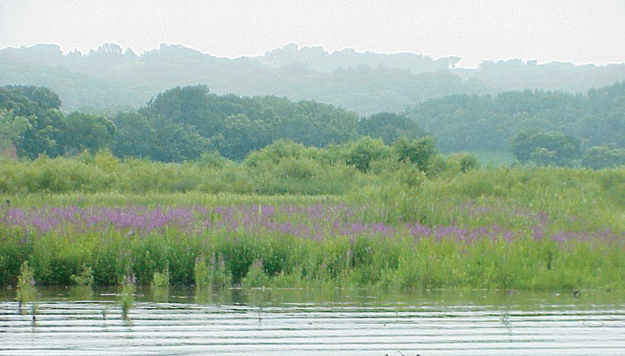Fall is when plants begin to go dormant. For annuals, this means desiccation of aboveground foliage and dispersal of seed through a variety of means (birds, wind, and humans).
|
|
Annual crops, such as corn and soybeans are harvested in the fall and many summer annual weed species, like barnyardgrass, prickly lettuce, and common lambsquarters, set seed then.
Perennial Growth Habit
With perennial plants, including many invasive plant species, things change in the fall. Instead of just producing seed, plants begin storing resources underground. In simple terms, the physiology of these plants is “flipped” so that a majority of carbohydrates are being sent to the roots instead of to leaves and shoots.
Because perennial plants remain alive over the winter, they need to have energy stores. If these energy stores are reduced, cut off, or disrupted, the likelihood of plant survival and regrowth in the spring is significantly reduced.
Many of the most common invasive plant species are perennial. With the exception of musk thistle, plumeless thistle, and the knapweeds, the remainder of Nebraska’s noxious weeds — Canada thistle, purple loosestrife, leafy spurge, saltcedar, knotweeds (biennial or short-lived), and non-native common reed — are perennial.
Other invasive plant species that are perennial and native to Nebraska include eastern redcedar and soapweed yucca. While the perennial growth form has allowed these species to persist and spread, it also may be their downfall as it allows for effective short- and long-term control measures.
Managing Invasive Species
Short-term management of isolated or small invasive plant species populations can be achieved through chemical, mechanical, and cultural tools. Long-term management of larger populations can be achieved through a combination of these tools that allows for other species to out compete the target species.
Several selective herbicides can control herbaceous and woody perennial species during the fall. After absorption, these compounds are translocated throughout the plant, including belowground where reserves are being stored for the winter.
It is important that applications are made beginning in fall through early winter when green foliage exists and daytime temperatures remain above freezing. (A frozen sprayer is extremely difficult to operate in the snow.)
Mowing and disking also can be effective short-term control tools. Native or newly planted species can be competitive with compromised invasive plant species and revegetation can be part of a long-term suppression strategy. Grazing offers short- and long-term control, depending on duration and intensity.
Developing a Long-term Strategy
While isolated treatments of invasive plant species can be effective, you’ll need a long-term plan of action to achievea significant and sustained reduction. Fall is a good time to develop such a plan, especially if it is to include revegetation with native or desirable plant species.

 WIthin a few years purple loosestrife has become well established along waterways and wetlands in many areas of eastern Nebraska. (UNL photo)
WIthin a few years purple loosestrife has become well established along waterways and wetlands in many areas of eastern Nebraska. (UNL photo)




Post a comment
Report Abusive Comment